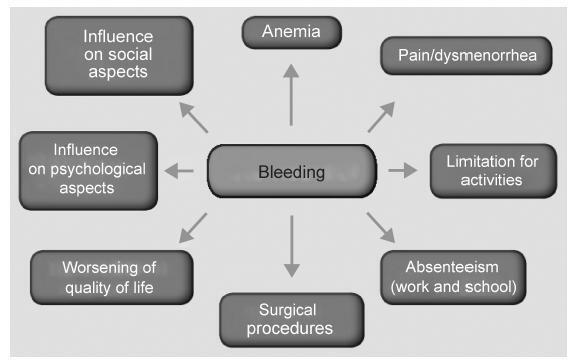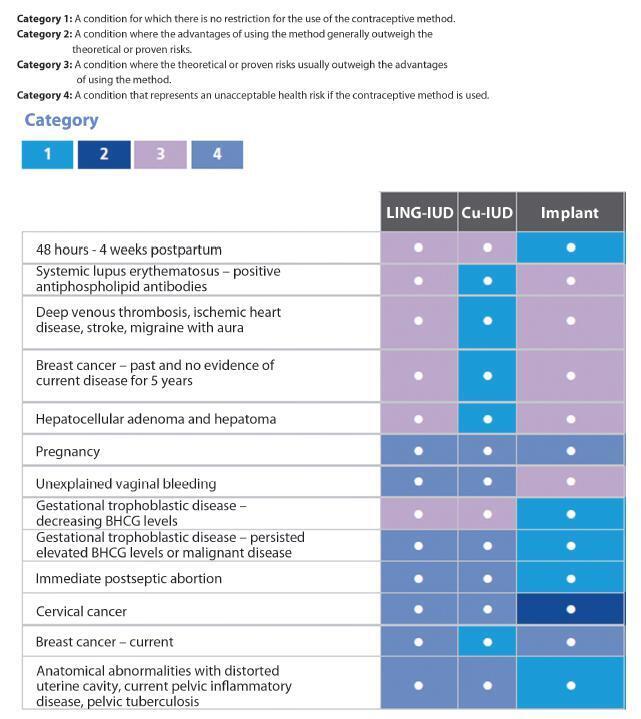-
Review Article02-01-2018
Systematic Review of Oral Therapy for the Treatment of Symptoms of Bladder PainSyndrome: The Brazilian Guidelines
Revista Brasileira de Ginecologia e Obstetrícia. 2018;40(2):96-102
Abstract
Review ArticleSystematic Review of Oral Therapy for the Treatment of Symptoms of Bladder PainSyndrome: The Brazilian Guidelines
Revista Brasileira de Ginecologia e Obstetrícia. 2018;40(2):96-102
Views253See moreAbstract
Interstitial cystitis (IC), including bladder pain syndrome (BPS), is a chronic and debilitating disease thatmainly affectswomen. It is characterized by pelvic pain associated with urinary urgency, frequency, nocturia and negative urine culture,with normal cytology. In 2009, the Society for Urodynamics and Female Urology (SUFU) defined the term IC/BPS as an unpleasant sensation (pain, pressure, and discomfort) perceived to be related to the urinary bladder, associated with lower urinary tract symptoms for more than 6 weeks duration, in the absence of infection or other identifiable causes. This is the definition used by the American Urological Association (AUA) in the most recent guidelines on IC/BPS. Interstitial cystitis may be sufficiently severe to have a devastating effect on the quality of life, but it may also be associated with moderate symptoms whose effects are less debilitating. Although there are several clinical trials to assess oral and intravesical therapies, the treatment for IC remains far from ideal. This systematic assessment evaluates published randomized clinical trials on oralmedications used totreat symptoms of BPS. This studywas performed according to the preferred reporting items for systematic reviews and metaanalyses (PRISMA)method. Two independent reviewers screened the studies to determine their inclusion or exclusion and to perform the methodological analysis. The inclusion criteria included randomized studiespublishedbetween April of 1988and April of2016 that used oral medications to treat symptoms of BPS or IC. According to the systematic review performed,we should consider pentosan polysulfate as one of the bestoptions of oral drugs for the treatment of BPS symptoms. However, this drug is not an available option in Brazil. Orally administered amitriptyline is an efficacious medical treatment for BPS, and it should be the first treatment offered.
-
Review Article01-01-2018
Ocular Changes During Pregnancy
Revista Brasileira de Ginecologia e Obstetrícia. 2018;40(1):32-42
Abstract
Review ArticleOcular Changes During Pregnancy
Revista Brasileira de Ginecologia e Obstetrícia. 2018;40(1):32-42
Views186See moreAbstract
Pregnancy is needed for the perpetuation of the human species, and it leads to physiological adaptations of the various maternal organs and systems. The eye, although a closed space, also undergoes some modifications, most of which are relatively innocuous, but they may occasionally become pathological. For women, pregnancy is a susceptibility period; however, for many obstetricians, their knowledge of the ocular changes that occur during pregnancy tends to be limited. For this reason, this is a important area of study as is necessary the development of guidelines to approach those changes. Of equal importance are the knowledge of the possible therapies for ophthalmological problems in this period and the evaluation of themode of delivery in particular conditions. For this article, an extensive review of the literature was performed, and a summary of the findings is presented.
-
Review Article12-01-2017
Is Ovarian Cancer Prevention Currently Still a recommendation of Our Grandparents?
Revista Brasileira de Ginecologia e Obstetrícia. 2017;39(12):676-685
Abstract
Review ArticleIs Ovarian Cancer Prevention Currently Still a recommendation of Our Grandparents?
Revista Brasileira de Ginecologia e Obstetrícia. 2017;39(12):676-685
Views170See moreAbstract
Ovarian cancer is the leading cause of death among gynecologic tumors because in most of the cases (75%), the disease is diagnosed in advanced stages. Screening methods are not available since the disease is rare, and the tested methods, such as ultrasound and CA125, were not able to decrease the mortality rate for this type of cancer. This article discusses the main risk factors for ovarian cancer, and the potential clinical and surgical strategies for the prevention of this disease.
-
Review Article10-01-2017
Acute Onset Neurological Disorders during Pregnancy: A Literature Review
Revista Brasileira de Ginecologia e Obstetrícia. 2017;39(10):560-568
Abstract
Review ArticleAcute Onset Neurological Disorders during Pregnancy: A Literature Review
Revista Brasileira de Ginecologia e Obstetrícia. 2017;39(10):560-568
Views151Abstract
Objectives
To characterize the most common peripheral and central neurological disorders during pregnancy.
Methods
Original research and review of the literature on neurological complications during pregnancy. We searched for keywords related to the topic on different databases.
Results
Pregnancy involves physiological changes that can trigger peripheral neurological and/or central nervous system pathologies, which can sometimes be associated with hypertensive disorders. A definitive diagnosis of neurological disorders can be made according to the trimester of pregnancy and the clinical findings. Carpal tunnel syndrome and peripheral facial palsy are common peripheral neurological disorders, more frequent in the second half of pregnancy. Central nervous disorders are more complex and a precise diagnosis must be made in order to improve perinatal outcomes, provide correct management and treatment and to prevent acute and long-term complications.
Conclusions
It is possible to achieve a precise diagnosis,management and treatment of neurological disorders during pregnancy, but these require a multidisciplinary approach, crucial to improve perinatal outcomes.
Key-words Bell’s palsycarpal tunnel syndromecerebrovascular complicationsHeadachemanagementPregnancySee more
-
Review Article09-01-2017
Preeclampsia
Revista Brasileira de Ginecologia e Obstetrícia. 2017;39(9):496-512
Abstract
Review ArticlePreeclampsia
Revista Brasileira de Ginecologia e Obstetrícia. 2017;39(9):496-512
Views655Abstract
The authors review hypertensive disease during pregnancy with an academic and practical view, and using the best evidence available. This disease, which is the most important clinical disease in Brazilian pregnant women, may have its incidence reduced with prevention through the use of calcium and aspirin in pregnant women at risk. Previously, it was a disease that presented with hypertension with proteinuria, but it has now been classified with new clinical parameters besides proteinuria. Morbidity and mortality should be reduced in a continental country such as Brazil using protocols for the early treatment of complications by calculating severe outcomes in preeclampsia. The early treatment of acute hypertension, use of magnesium sulfate and early hospitalization in cases of preeclampsia are concepts to pursue the reduction of our pregnant women’s mortality.
Key-words HELLP syndromeHigh risk pregnancyPreeclampsiapregnancy arterial hypertensionPregnancy complicationsSee more
-
Review Article08-01-2017
Physical Activity during Pregnancy: Recommendations and Assessment Tools
Revista Brasileira de Ginecologia e Obstetrícia. 2017;39(8):424-432
Abstract
Review ArticlePhysical Activity during Pregnancy: Recommendations and Assessment Tools
Revista Brasileira de Ginecologia e Obstetrícia. 2017;39(8):424-432
Views275See moreAbstract
The literature that supports and recommends the practice of exercise during pregnancy is extensive.However, although a more complete research on ways to evaluate the physical activity performedby pregnant women has been perfomed, it is found that there is no gold standard and that the articles in the area are inconclusive. Thus, the objective of the present article is to review relevant aspects, such as, technique and applicability of the different methods for the assessment of physical activity during pregnancy to providemore reliable and safe information for health professionals to encourage their pregnant patients to engage in the practice of physical activity. This review concluded that all tools for the analysis of physical activity have limitations. Thus, it is necessary to establish the objectives of evaluation in an appropriate manner, as well as to determine their viability and costeffectiveness for the population under study.
-
Review Article07-01-2017
Abnormal Uterine Bleeding
Revista Brasileira de Ginecologia e Obstetrícia. 2017;39(7):358-368
Abstract
Review ArticleAbnormal Uterine Bleeding
Revista Brasileira de Ginecologia e Obstetrícia. 2017;39(7):358-368
Views348Abstract
Abnormal uterine bleeding is a frequent condition in Gynecology. It may impact physical, emotional sexual and professional aspects of the lives of women, impairing their quality of life. In cases of acute and severe bleeding, women may need urgent treatment with volumetric replacement and prescription of hemostatic substances. In some specific cases with more intense and prolonged bleeding, surgical treatment may be necessary. The objective of this chapter is to describe the main evidence on the treatment of women with abnormaluterinebleeding, both acuteand chronic.Didactically,thetreatmentoptions were based on the current International Federation of Gynecology and Obstetrics (FIGO) classification system (PALM-COEIN). The etiologies of PALM-COEIN are: uterine Polyp (P), Adenomyosis (A), Leiomyoma (L), precursor and Malignant lesions of the uterine body (M), Coagulopathies (C), Ovulatory dysfunction (O), Endometrial dysfunction (E), Iatrogenic (I), and Not yet classified (N). The articles were selected according to the recommendation grades of the PubMed, Cochrane and Embase databases, and those in which the main objective was the reduction of uterine menstrual bleeding were included. Only studies written in English were included. All editorial or complete papers that were not consistent with abnormal uterine bleeding, or studies in animal models, were excluded. The main objective of the treatment is the reduction of menstrual flow and morbidity and the improvement of quality of life. It is important to emphasize that the treatment in the acute phase aims to hemodynamically stabilize the patient and stop excessive bleeding, while the treatment in the chronic phase is based on correcting menstrual dysfunction according to its etiology and clinical manifestations. The treatment may be surgical or pharmacological, and thelatterisbasedmainlyonhormonaltherapy,anti-inflammatorydrugsandantifibrinolytics.
Key-words Abnormal uterine bleedingdysfunctional uterine bleedingheavy menstrual bleedingmenorrhagiaPALM-COEINSee more
-
Review Article06-01-2017
Long-Acting Reversible Contraception
Revista Brasileira de Ginecologia e Obstetrícia. 2017;39(6):294-308
Abstract
Review ArticleLong-Acting Reversible Contraception
Revista Brasileira de Ginecologia e Obstetrícia. 2017;39(6):294-308
Views310See moreAbstract
Unwanted pregnancy is a major public health problem both in developed and developing countries. Although the reduction in the rates of these pregnancies requires multifactorial approaches, increasing access to long-acting contraceptive methods can contribute significantly to change this scenario. In Brazil, gynecologists and obstetricians play a key role in contraceptive counseling, being decisive in the choice of long-acting reversible methods, characterized by intrauterine devices (IUDs) and the contraceptive implant. The vast scope due to the reduced number of situations to indicate long-acting methods should be emphasized in routine contraceptive counseling. On the other hand, gynecologists and obstetricians should adapt the techniques of insertion of long-acting methods, and engage in facilitating conditions to access these contraceptives through public and private health systems in Brazil. This study is part of a project called Diretrizes e Recomendações FEBRASGO (Guidelines and Recommendations of the FEBRASGO - Brazilian Federation of Gynecology and Obstetrics Associations from the Portuguese acronym). It aims to review the main characteristics of long-acting contraceptives and critically consider the current situation and future prospects to improve access to these methods, proposing practical recommendations of interest in the routine of gynecologists and obstetricians.



